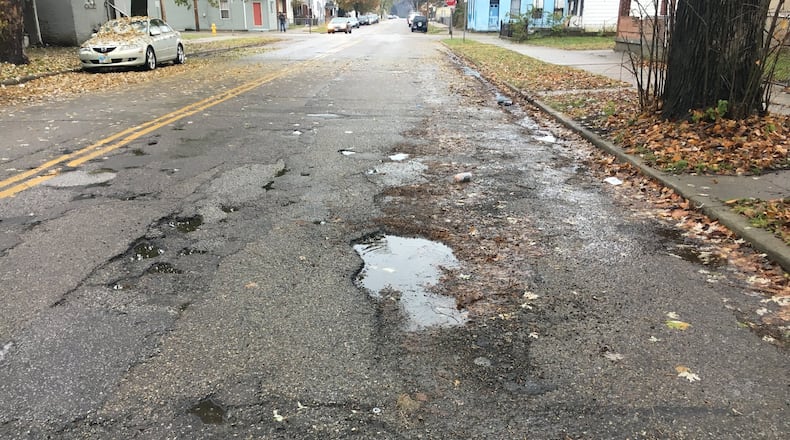Under the proposed resolution, which was to be considered at Wednesday’s City Council meeting, the following promises are suggested:
- The city manager or his designee will establish a formula that will set forth funding allocations for each of Hamilton's 17 neighborhoods.
- Each neighborhood will be empowered to hold public meetings of its residents to determine which streets "are the desired streets to receive priority funding if the street levy is successfully approved by voters," the resolution states.
- Also, the city proposes the promise that the city council "further declares that street levy funds cannot be used immediately adjacent to the Spooky Nook at Champion Mill sports complex, and should be focused on residential streets," according to the resolution.
City Manager Joshua Smith suggested the resolution after hearing some feedback about why some people might lean against the levy, which would generate nearly $3.9 million per year, allowing the city to maintain 5 additional miles of streets, while maintaining another 5 miles.
The levy would cost the owner of a $100,000 home about $171.50 per year.
The all-volunteer committee known as Citizens for Hamilton, which is working for the levy’s passage, has been hosting four meetings this week, the last two of them being from 6:30 to 730 p.m. Wednesday at Linden Elementary School, 801 Hoadley Ave.; and the same time Thursday at Garfield Middle School, 250 N. Fair Ave.
Hamilton resident Keith Harding said he opposes the levy, and the proposed promises will not sway him. He opposes a streets levy, he said, because of money Hamilton spends on other things, such as a ramp Hamilton built last year that linked the hiking/biking path along the shoreline of the Great Miami River with the RiversEdge amphitheater above it that cost $766,000.
Harding also cites last year’s decorative addition of Hamilton’s “Billy Yank” symbol, costing about $150,000, at the railroad overpass that Hamilton paid as part of a $1.9 million rehab of the bridge and nearby sidewalks, as well as money the city has given the non-profit CORE (Consortium for Ongoing Reinvestment Efforts) Fund, which has been transforming the business corridor along High Street downtown and Main Street across the river.
“But we can’t fix our roads without a tax increase?” he asked. Harding argues Hamilton should care for its streets and seek tax levies for such other expenses, which he said seem like extras.
Austin Keckler, a 30-year-old West Side resident, said he thinks the proposed promises are a good idea that should help the levy’s chances.
About direct input from neighborhoods about which of their streets receive funding, he said: “I like that.”
“There’s so many potholes on the streets,” Keckler said. “I drive those streets every day to go to work, and I think they definitely need to improve them somehow, and some way. And I definitely think the money should be used for that.”
About the Author
